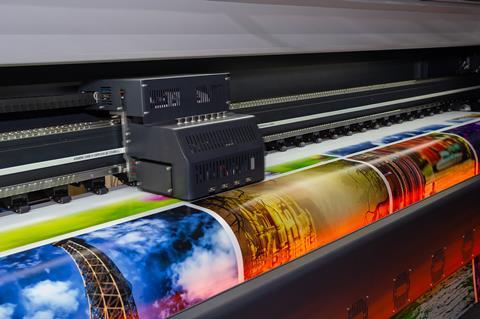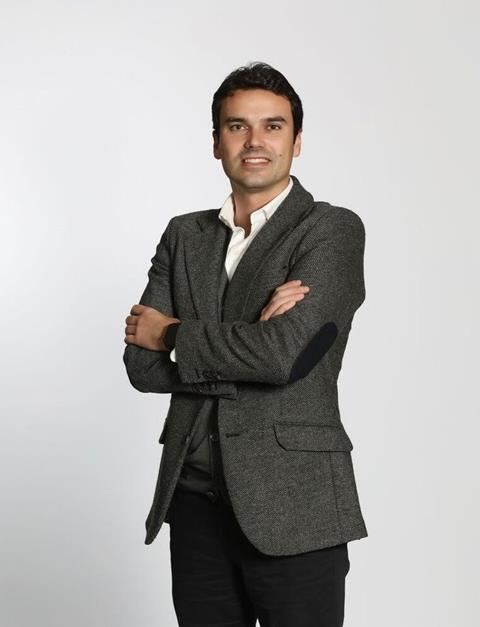
Following his presentation at Sealed Air’s PACK DIGITAL event in Milan earlier this year, we asked Abel Sanchez-Hermosilla Martinez, Head of Brands and Sustainability Innovation EMEA at HP, about the potential of personalisation to create value for consumers and the capacity of digital printing to reduce packaging waste in the supply chain.
When you spoke at Sealed Air’s PACK DIGITAL event, you stated that one of the benefits of digital printing is that it can “save 30% of your packaging waste in your supply chain.” How is this achieved?
Let me explain HP Digital Print with an example. Imagine you are doing a PowerPoint presentation to someone. You need to build the story, what to present, what is the right content, what specific graphics and texts you will add… Let’s say it’s a presentation of 3 slides, each of those slides are unique and different and every slide is part of a bigger story.
Once you are ready, you push the print button and the slides come out of your printer immediately. Digital print works the same way, but at scale. Imagine that instead of a PowerPoint you apply the design on packaging, and each slide (or design) is applied on each item or SKU (Stock Keeping Unit) that you produce.
When you have the campaign designed and you push print, you will immediately have [the designs] in your factory, you can start producing them, and that has a lot of benefits.
First of all you can print with speed, saving around 4-6 weeks versus analog printing. For example, if there is a topic on social media uniquely relevant to your brand and you want to leverage that topic and make it relevant to people on your pack, not only on your digital initiatives, you can do that.
If you want to pilot test in one area of your country before launching the full production, you can do that. In the same production run there can be variable graphics, (each unit can be different). You can rapidly test 3 or 4 versions of a campaign.
It also allows you to reduce around 30% of packaging waste, because you don’t need to make long runs to set up the printer and don’t have Minimum Order Quantities (MOQ), your MOQ is just 1 unit, so you can produce Just-In-Time (JIT).
Lastly, you can coordinate print jobs across machines in the cloud. If you have one HP machine printing one job, from a quality and colour consistency point of view you can get that anywhere in the world regardless of the substrate you are printing on.
We designed an adoption journey for brands using HP Digital Print: digital printing is cheaper, faster and more efficient for short runs, and it’s becoming more and more relevant to be agile and flexible with e-commerce or DTC (Direct To Consumer) platforms; if brands grow the ability to digitally print more products, they will unlock other benefits like the ability to minimise printed materials waste by 30% in their supply chain, lower their global warming impact by up to 80% or print on sustainable materials; third, we support growing their business and engaging consumers with personalisation and sustainability to accelerate sales, through Reinventing Creativity.

From research in collaboration with Sparks and Honey, you discovered that “consumers are willing to pay at least 20% more” for personalisation. Can you give examples of how digital printing can deliver effective personalisation in packaging applications?
We have spent a lot of resources to become experts on this trend. We have been able to conduct research analysing 50 million conversations on SSMM (Search and Social Media Marketing) over 9 months across 4 countries. We found that the size of personalised items in the marketplace is huge: 201 billion dollars, growing to double digits the last 5 years and even faster after Covid-19.
Almost half of the consumers are switching to brands offering personalised experiences, and they are demanding it more. I would say the younger they are the more they want it. Finally, 70% of those shoppers are willing to pay more money for personalised products because there is an intrinsic value in something that is personalised or customised for you.
This means if brands prioritise personalisation as a trend in their marketing strategy, they will increase their ability to relevantly connect with the consumers they are trying to reach and drive or build value into their brand.
You mentioned the concept of “Bringing Bonds to Life”, such as the Hershey’s Kisses campaign where consumers could scan a QR code on the packaging to record a video and send it to their partner, which only the partner can access due to the QR code being unique. What potential do you think digital printing for personalised packaging has compared to physical printing?
How do you create a campaign like the one you mention? It’s not by chance, it’s not only by working with the right creative agency… It is also thanks to a proprietary framework we have developed, which includes the 6 top emotional drivers of why a human being wants to interact with something that is physical but is personalised, drivers that brands can activate through their marketing campaigns.
The example you mention, Bringing Bonds to Life, is the territory of gifting and how we can visualise relationships in physical form. The insight behind this territory is very clear: “the more personal a gift is, the more we show others how much we care”, and this is exactly what we did with Hershey’s Kisses, connecting people in a unique, personalised and emotional way.
Stories like this are where we truly see the power of digital print. One of the things we want to put brands in service of is how co-creation drives ROI (Return On Investment). What we have seen from P&L (Profit and Loss statement) or a media planning point of view is that this releases a lot of pressure to use less budget to advertise paid media, because the more you do this type of dynamic, the more people will talk about it organically and it will go viral quite fast.
When we’ve analysed this, we’ve seen brands saving somewhere between 10% to 20% of their paid media budget - they put part of it towards digital print but part of it into other things or they save it.
We have developed a study with WARC (World Advertising Research Company) where we discovered these types of campaigns using personalisation, user generated content and co-creation are twice as good as any other type of marketing campaign in driving sales for the brand.
They are much better at penetration and market share, but to me this is the most important metric: they are twice as good at ROI. There are other relevant metrics that are also positively impacted by this type of campaign such as SSMM buzz, PR value, brand health measures or consumer participation.
In February this year HP introduced its HP PageWide C550 post-print digital corrugated press designed to optimise operational efficiency and lower the manufacturing costs of corrugated Flexo and Litho boxes, and the following month we spoke to Eli Mahal, head of L&P Marketing at HP Indigo about its new press for the digital flexible packaging industry.


















No comments yet